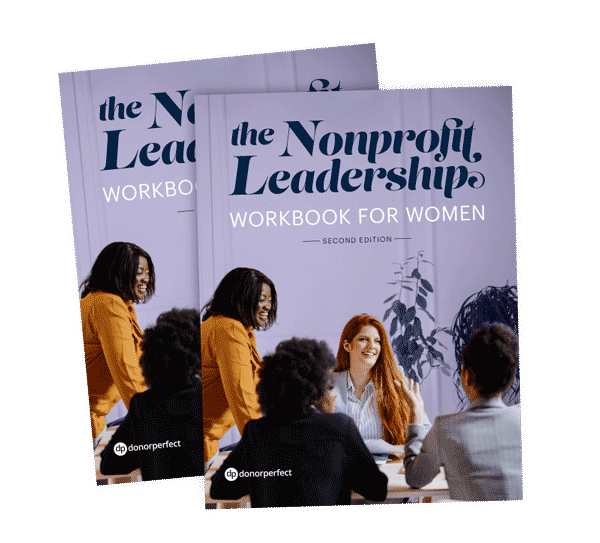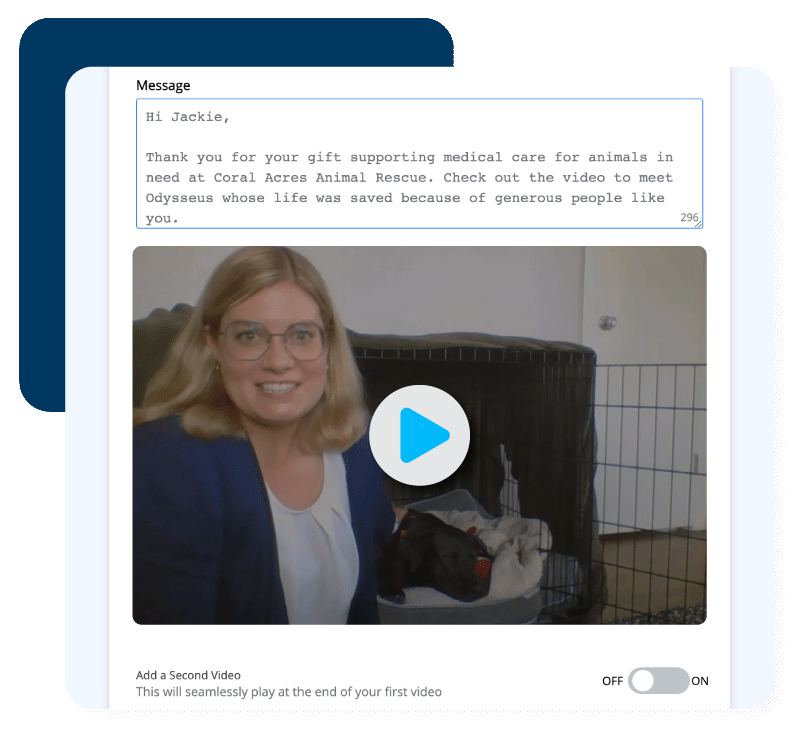Nonprofit Technology & Fundraising Blog
Subscribe to our mailing list

January 25, 2024 | Donor Retention, Monthly Giving
It feels like the last decade has been one unprecedented event after another. From global pandemics and extreme inflation to war and civil unrest, it can be difficult to keep pace with the world’s news and how markets – and your colleagues and donors – react.
According to the 2023 Donor Trust Report by the BBB Wise Giving Alliance, giving has declined among younger people and people in lower-income households. And according to Nonprofit Pro, total giving dropped by 1.7% in 2023 – the first decline in giving since 2012. There’s a lot of stark statistics out there that could be cause for panic.
It’s easy to get bogged down by negativity, but luckily, every problem can be rotated and seen from another angle. As a nonprofit professional, you’re particularly skilled at finding opportunities hidden among challenges, but we understand it sometimes gets overwhelming. To help, here are a few ideas for finding a little light in today’s darkness, and adapting to your community’s concerns in times of stress and worry.
Concern: Individual giving declined by 6.4%, or 13% when adjusted for inflation last year.
It’s possible that you’ve had conversations with donors who would like to support your cause, but they’re worried about making a major gift during times of economic uncertainty. More likely, you’ve heard from donors who had to stop giving because their budgets no longer have room for charitable giving.
For fundraisers who have been in the industry for a while, you probably recognize this pattern from other recessions or crises: on top of very real restrictions in people’s budgets, fear can be a powerful motivator for stopping or reducing donations.
Alternate angle: Your donors are worried about shorter-term losses, so what might happen if you try a longer-term approach?
While individual annual giving was down last year, other types of giving saw a modest increase. Foundations and bequest giving increased by 5% over the past year, and corporate giving increased by about 4% when adjusted for inflation.
Suggest giving vehicles to your supporters that are friendly to their budgets now, but still allow them to stay connected as donors. For annual givers, a $10 monthly gift can be easier to plan for and even more palatable than a one-time $100 gift, despite being $20 more generous.
For major donors, they may feel more comfortable exploring planned giving options like charitable remainder trusts, which offer income and stability during the donor’s lifetime, and designate the rest for charitable causes.
Silver lining: While your donors are concerned enough about their day-to-day expenses to cut back their cash gifts, generosity still appears in other places.
If you’re worried about a decline in individual giving, it could be a good time to survey or check in with your donors. Ask them how they feel about their giving, and if there’s any cause for concern that you can work together to solve. It’s a great touchpoint for your donors, and when they see that you care about them beyond their gifts, you’ll build invaluable trust.

Starting or growing a monthly giving program may be easier than you think! DonorPerfect teamed up with fundraising consultant Erica Waasdorp to create the Monthly Giving Success Kit to help you take the first steps!
GET YOURS NOWConcern: Nonprofit staff turnover is an expensive problem, with some research estimating that fundraisers stay in their roles for only 16-18 months on average.
Nonprofit employees who leave their current positions for roles elsewhere are citing salary competition, stress, and burnout as their top reasons for seeking other opportunities. These are wicked, sector-wide problems that obviously can’t be solved in a blog post. The bottom line is, when it comes to things like the ability to provide for one’s family and live a fulfilling life, if your team isn’t finding it with you, they will certainly seek it out elsewhere.
Alternate angle: When staff members leave, they provide valuable data about what’s missing in their work life, so what might happen if you survey your team before they leave?
Exit interviews with departing employees often provide excellent feedback for improvements for future staff. This is frequently because the departing employee feels safe to express themselves honestly and completely, since there won’t be any risk of retaliation or punishment from a job they’re leaving.
It takes patience, honesty, active listening, and an open mind, but in addition to exit interviews, you could try introducing “entry” and “stay” interviews to boost staff retention. According to organizational psychologist Adam Grant, “I’m a big fan of exit interviews–there’s just one little issue. It is the dumbest time to run them. Why would you wait until people have already committed to walk out the door to say, if only I had a time machine, I would go back to the past and convince you to stay?”
In an “entry” interview, you can try learning about your new team members by asking what they did and didn’t like about previous employers, what kinds of perks or opportunities they hope to see in their future with your nonprofit, and what they hope to achieve with you. In a “stay” interview, take the time to really check in with your current team members to see what their challenges and joys are, and what it takes to keep them on your squad.
Silver lining: With a radically empathetic approach, you can establish yourself as a trustworthy and caring leader, and that builds loyalty.
As the fundraising adage goes, “people give to people.” Likewise, your team gives their time, energy, and effort to each other and your nonprofit’s community, not just the abstract mission they work for. If you’re in a position to lead or affect change in your organization, now’s the time to lift up your teammates and show them you care.

Are you a woman working in the nonprofit sector? Get your free Nonprofit Leadership Workbook for Women and learn how to lead and support your team with your unique skills!
Concern: The majority of donors who reported decreasing or stopping their donation said that wealthier people should give instead.
While mega-gifts from philanthropists like MacKenzie Scott make for splashy headlines, they can also have the unintended effect of discouraging smaller-dollar donors from giving. If a donor has a hard time seeing the impact of their giving, or if they feel unappreciated, it becomes harder for them to find the motivation to continue giving.
Alternate angle: You may have donors who don’t see how they make a difference. Is there another way you can show them their impact?
It’s easy to get caught up in the overall, enormous scope of whatever issue your nonprofit is working to tackle. When we’re talking about poverty, housing insecurity, or any number of large-scale, challenging problems, a donor who can comfortably give $25 may feel like they’re throwing money into a bottomless pit, and their generosity might not mean much to you.
Are there ways you can show all of your donors that they each fill an important role in your community? How are you demonstrating the cumulative effect of smaller-dollar donations? Properly stewarding and caring for your annual donors now helps nurture your major and planned giving pipelines, so strong donor engagement is good for both your nonprofit and your donors.
Silver lining: There are creative ways to appreciate and highlight donors of all giving levels in your community.
If you’re sending thank-you messages to your donors, but they aren’t getting across, it might be time to try something new. Even better: new stewardship techniques could even save you time and money in the process.
In addition to your form acknowledgement letter/tax receipts, why not try sending a video showcasing your latest success to your monthly donors? Or if your donors are concerned about not feeling involved or important, you could try hosting a virtual town hall to provide updates and answer questions. Both are free, and both pack a big punch!

DonorPerfect clients: You can create, edit, and send video messages to your supporters directly from your system! Check out DP Video for more information.
Don’t have DonorPerfect? Click here to request a demo of these features.
It’s disingenuous to sugarcoat reality: it’s always been a hard world for nonprofits, and the last few years in particular have been beyond taxing. But taking a little time to breathe, examine your challenges in a new light, and find the silver linings can help save your sanity and boost your fundraising results.
No matter what challenges you’re up against, the DonorPerfect team has your back and is here to help. Nonprofits raise 25% more in their first year with us – get in touch with us to learn how!
Follow us on social!